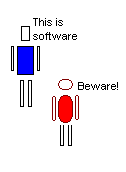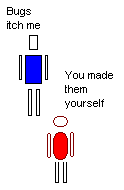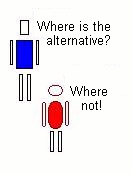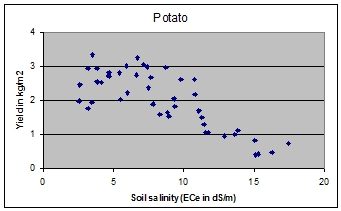| SaltMod |
This is a mathematical, numerical simulation model describing the relations between agriculture, crop rotation, and irrigation. Factors like rainfall, potential and actual evaporation (evapotranspiration), climate, and hydrology play also a role. The model calculates depth and level of shallow water-table, capillary rise and deep percolation as well as the salt balance in the soil It gives graphs of soil salinity and subsurface drainage by drains or wells. There is ample attention regarding the reuse (conjunctive use) of ground and drain water from wells. Finally, the model includes farmers' responses to water logging and soil salinity. |
| SahysMod |
This is a combination of Saltmod with a hydrologic
model of ground
water flow and hydraulics to account for large
spatial variation through a network of polygons.
It includes phreatic (unconfined) aquifers as well
as soil layers with slow vertical hydraulic
conductivity (soil permeability for water) resulting
in semiconfined (leaky) aquifers.
|
| SaltCalc |
This is simplified version of SaltMod with the
advantage that calculations are made for shorter
time steps (monthly instead of seasonally or
even daily).
SaltCalc can be used when field observations of
irrigation, sahallow water table and soil
salinity have been made and one wishes to
develop a model for that situation and for the
maintenance of the salt balance in the soil.
Normally, calibration of unknown
values must be done using a range of values of
the corresponding variable, running the model
repeatedly and selecting the optimal value from
the range that gives model results closest to
observed values.
|
| PolySalt |
This is simplified version of SahysMod with the
advantage that calculations are made for shorter
time steps (monthly instead of seasonally). The
application principles are similar as those
described before under "SaltCalc".
|
| LeachMod |
This model is somewhat similar to SaltCalc.
On the one hand the water management options are
fewer (e.g. re-use of drainage or well water for
irrigation do not feature here), but the model is
more modern in the sense that the variable input
for each time step is given in a table so that
the calculations over all the time steps are done
in one go. Moreover, by inserting the observed
values of soil salinity in the data table, the
model optimizes the leaching efficiency of the
soil automatically so that the optimal salt
balance can be found.
|




